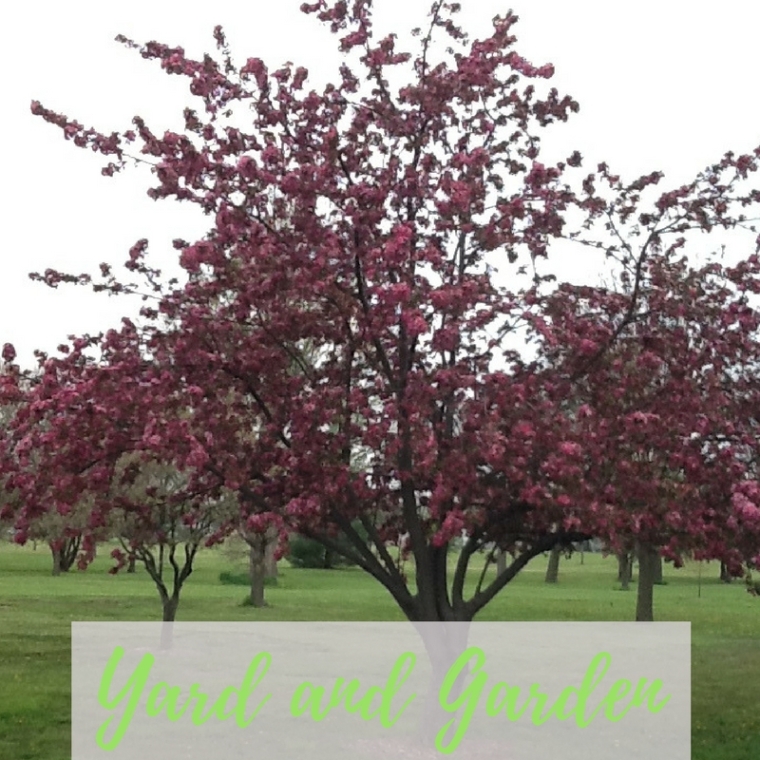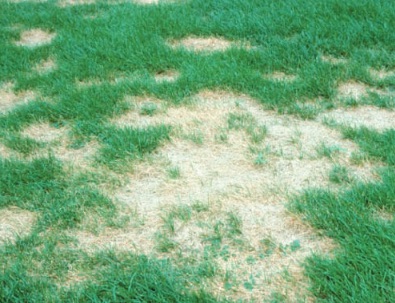
This is the Q&A for the Yard and Garden show for May 12, 2017. Yard and Garden Live is a call-in radio show I do on KUTT 99.5 FM from 10-11:30 am and it will run through July 28, 2017. It can also be found on kutt995.com for online listening. If you missed a show or just want to read through the questions, I have written them all in my blog and will continue to do so throughout the season.
Guest Host: Dr. Paul Read, Viticulture Specialist from UNL
1. The first caller of the day called to ask when is the best time to take cuttings from grape vines and how should it be completed?
A: To take a cutting, when you cut off the dormant growth from the previous year, you can take those branches and put them in moist sand to get them to root. After the last spring frost of the year, you can plant those rooted branches outdoors. When you do this method, you need 2-3 buds on each branch. Put at least 1 bud into the ground and have 1-2 buds out of the ground for leaf growth. At this time of the year, you can complete the layering method of propagation. For layering, just bury a few of the longer branches that are still attached to the vine. Once they root, you can cut them from the main plant and replant somewhere else.
2. A caller has a 7 year old peach tree that is dropping leaves like it is fall. What would be causing this to happen and can it be corrected?
A: This could be abiotic stress due to unfavorable environmental conditions. It could also be from peach tree borer. Look along the trunk for small borer holes or sap oozing from branches or the trunk to know if it is the borer. If borers, spray the trunk with a fruit tree insecticide spray. If it doesn’t seem to be from insects, keep the tree healthy through a good mulch ring and regular watering as needed when natural rains are infrequent.
3. This caller has 2 concord grapes that were producing well last year but were taken by the birds before they could be harvested. How can you keep these birds away?
A: Bird netting over the plants to keep the birds out is the only good, effective method of managing birds in grapes.
This caller also wanted to know what is wrong with her peach trees? She has 2 peach trees that are 9-10 years old that now have an orange sap oozing from the trunk.
A: This would be from gummosis, a fungal disease common on peach trees. There is no real cure for this disease, it is just best to prune out the small branches that are affected and cut 6-8 inches below the infected area. Dip your pruners into a bleach/water solution between cuts to prevent further spread of the disease. It could also be from peach tree borers. In that case, use an insecticide labeled for use on peaches for borers.
4. A caller has a row of cottonwoods but there is one tree in the middle that always has yellow leaves rather than green leaves. What is wrong with it and can it be corrected?
A: This is most likely due to an iron deficiency in this tree. That can be corrected by having a certified arborist come in to do a trunk injection. The granules or stakes around the tree are not very effective. Often, iron chlorosis is a sign of other problems with the tree and may be the beginning of the end for the tree. That being said, many of our trees live many years after developing an iron deficiency and some just need an iron injection every 5+ years to live a long and happy life.

5. A caller has some maples that were recently pruned and the branches had a fungus and some white powdery substance in them when the branches were removed. What is wrong with them and do they need to be removed?
A: This caller emailed me with photos of the problem so I could see for sure what is wrong with the plants and if it can be corrected or if it is a safety issue. Unfortunately, this does look like decay in the tree. Decay within the interior of the tree can be dangerous for when it may fall, the tree is not stable when it has decay. I would guess that the tree has a large limb that was removed at one time and it was too big or improperly cut and now there is a large hole leading into the tree. I would get a certified arborist out to take a look and possibly remove the tree.
6. This caller has a cedar windbreak and would like to plant crabapples. Can crabapple trees grow near a cedar tree?
A: Yes, you can plant crabapple trees near cedars, just make sure that you select a variety that is resistant to cedar-apple rust to avoid having to spray annually to avoid the damage from cedar-apple rust.
7. A caller has a blue spruce tree that is 8 feet tall and was planted 14 years ago that died over the winter months. What happened and how can it be avoided in the other trees in the row?
A: This could be due to a canker which is a fungal disease that stops the flow of water and nutrients from the canker point outward and upward through the tree. If the canker occurred on the lower part of the trunk it would cause the tree to die. There is no cure for canker and no way to prevent it. It could also be due to a root issue that could have happened when the tree was planted or in the nursery. The tree may have a root that girdled the stem killing the tree or it may have been planted to deeply. When you remove the tree, look at the root system to see if this was the problem.
8. This caller has small brown circles in the lawn all around a tree. This problem occurs every year later in the summer in the same location of the lawn. What would be causing this and can it be controlled?
A: This is most likely due to summer patch, a common lawn fungal disease that occurs in the mid-late summer. Normally, this isn’t something that is treated for because it doesn’t occur in the same location every year, but for this caller, it does. Management practices in the lawn can help, such as mowing higher and doing core aeration to reduce the thatch layer in the lawn. If necessary, fungicides labeled for summer patch can be used from now until the end of June.

9. What is a better species selection than using Bradford pear?
A: Chanticleer or Cleveland Select are better options for pear trees than a Bradford Pear. Bradford pears tend to have narrow branch arrangement that leads to more broken branches from high winds and storms. These two options are better choices because their branches are wider when arranged on the trunk.
10. A caller has a maple tree that is half green and half a much lighter green color. What would cause this and can it be corrected?
A: The soil pH is higher on one side. A disturbance on the one side could cause it to have iron deficiency on the lighter green side. Try to spray chelated iron on the lighter green side to fix the problem.
11. When is the best time to start asparagus?
A: Spring is the best time, from March to April is prime time for planting asparagus crowns. Be sure to still wait 3 years before full harvest begins.
12. The final caller of the day had 2 questions. She had botrytis on her strawberries last year and sprayed a week ago. Does she need to spray again? Also, can an Annabel Hydrangea be planted in full sun?
A: For the strawberries, apply from 5-10% bloom until flowers have finished blooming. For more information see the Midwest Small Fruit and Grape Spray Guide from Midwest Universities including UNL. Annabel Hydrangea is one that prefers partial shade. I would avoid planting it in full sun on the South or West side of a building where it would get too hot.
